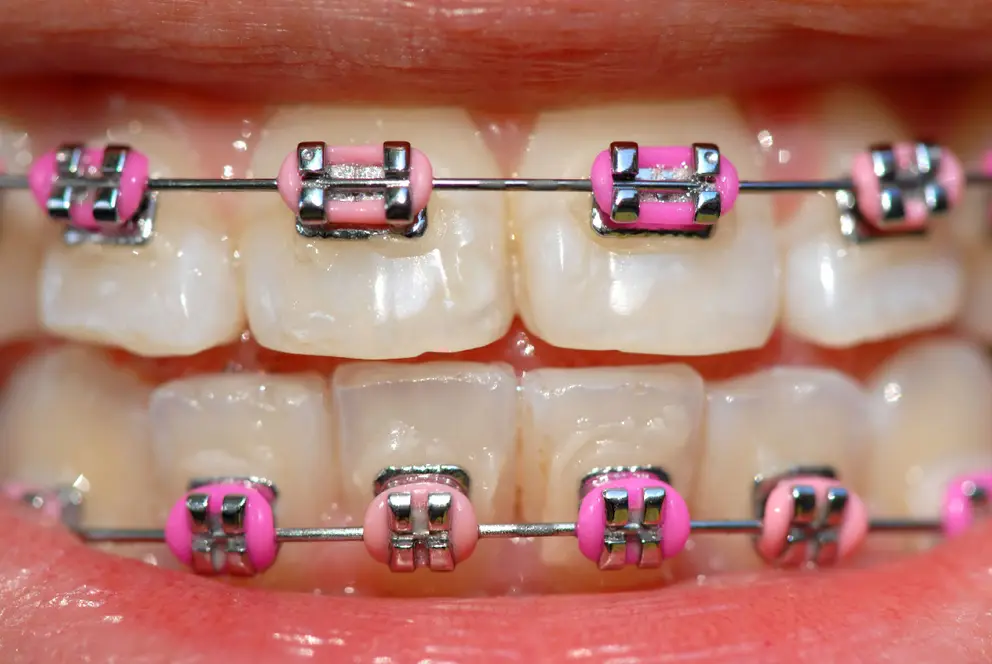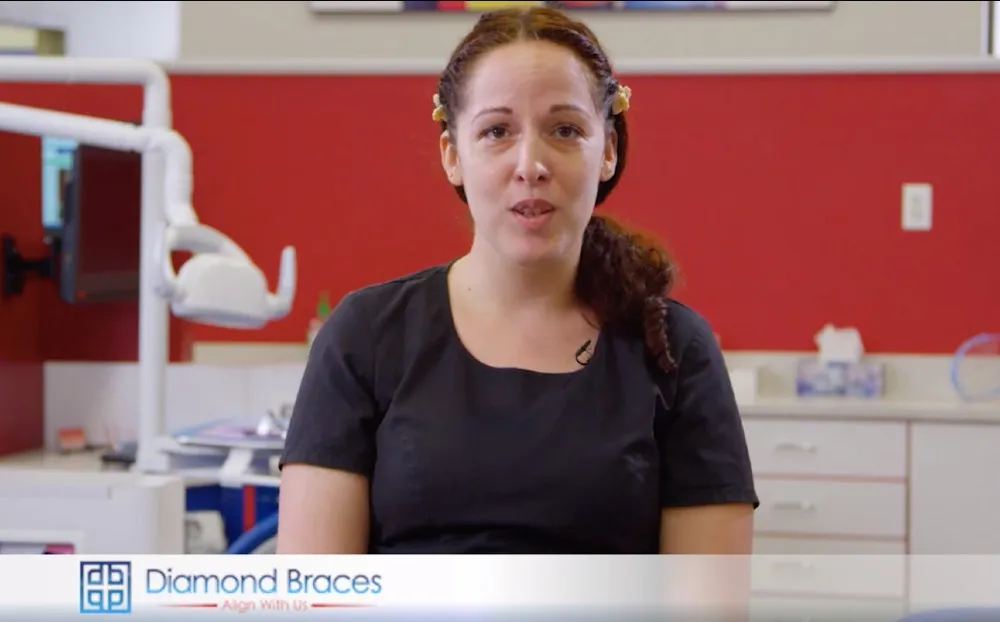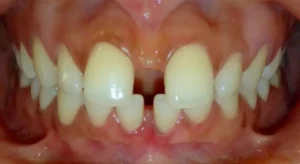What Are Metal Braces?
Orthodontic care involves the use of appliances like metal braces. These braces have high-grade stainless-steel brackets and a metal archwire. The wire, which follows your jaw’s curvature, is held in place by a bracket around the back molar.
The archwire and brackets, along with rubber ligature elastic bands, work together to straighten your teeth. These bands are usually interwoven into the brackets.
Many orthodontic treatments are available for those who want a straighter smile. However, traditional metal braces are the most common.
The Orthodontic treatment duration with metal braces varies depending on the individual’s needs. We determine this during the initial consultation. The braces treatment then commences, gradually moves the teeth into right place.
To keep your metal braces in good condition, be sure to only eat foods that are braces-friendly, routinely brush and floss, and be sure to keep up with continuous follow-up appointments.
What Do Metal Braces Do?
Metal braces are designed to correct various orthodontic issues, including misalignments in your teeth. These issues can lead to additional oral health problems. Some patients opt for braces purely for cosmetic reasons, desiring a better-looking smile.
Misaligned teeth can lead to a range of problems. These include difficulties with chewing, breathing issues, insomnia, infections, chronic dental pain, and excess plaque buildup.
You should not ignore even a malocclusion that is only aesthetically displeasing. Insecurity about your smile can affect self-confidence and contribute to mental health issues like anxiety and depression.
Mild misalignments can also cause gum disease, which can lead to more serious systemic issues. These include high blood pressure, heart conditions, certain types of cancers, and diabetes.
Therefore, taking care of your smile is crucial. Joy and well-being have a close link ultimately.
Explore orthodontic options with a consultation to address any orthodontic issues you may have. This could include bite issues that require tooth movement using devices like rubber bands.
• Learn more about the conditions that braces can help treat.
How Much Do Metal Braces Cost?
Metal braces typically cost anywhere between $3,700-$7,000 on average for comprehensive orthodontic treatment for upper and lower arches, including retainers. That said, costs can vary based on:
- The severity of your case
- The practice where you seek treatment
- Your insurance
- Experience of your orthodontist
The full cost of metal braces will generally be less than other orthodontic options, and often includes pre-treatment screenings, x-ray imaging, follow-up office visits, and any necessary adjustments and emergency care. It should also include retainers and post retention follow-ups.
How Much Do Metal Braces Cost with Insurance?
If you have dental insurance, you might be able to cover some (or all) of the cost of your treatment through your plan. If you’re dissatisfied with your current provider’s discounts or find traditional providers too expensive, consider an alternative. Employment-based savings accounts are a viable option. They can help you manage the cost of metal braces.
In the realm of orthodontics, metal braces are a common choice. Understanding the metal braces cost and benefits can guide you in making an informed decision.
State-subsidized providers like CHIP and Medicaid may cover the full cost of metal braces for eligible children and adolescents. However, adults may not have coverage because of age restrictions and may need to pay out of pocket.
In 2021, the average cost of traditional metal braces through private, non-subsidized health insurance was $3,407. Additional costs for upper and lower retainers could reach up to $900. This means you could be paying around $142 or more per month over the typical treatment time of 24 months.
Do I Have to Wear Braces?
Orthodontic treatment with traditional metal braces usually consumes up to two years. You might start seeing minor changes in your teeth after the first month (4 to 6 weeks).
The treatment length can vary. Factors like bone density, patient’s age, and diagnosis severity can affect it. But, you can expect the treatment length to be around these timespans.
Whether you choose braces or Invisalign, the process is similar. Also, tooth colored options are available for a more aesthetic look.
As for how fast metal braces work compared to ceramic braces and clear braces, it’s somewhat of a mixed bag. Though Invisalign and braces typically finish around the same time, certain variables will affect treatment speed in any case, like:
- Provider experience and expertise (most importantly)
- Severity of diagnosis
- Patient compliance
Invisalign and braces are just tools in the hands of the operator.If you are not a pilot, you will not be able to fly a plane, even if the plane is working perfectly fine. Likewise, if you’re not careful with your orthodontic appliances, do not expect optimal care results.
Metal Braces

Many potential advantages to metal braces could appeal to an orthodontic patient. Conversely, there are many potential disadvantages that might not make metal braces so appealing to a prospective orthodontic patient. Here’s a rundown of the advantages and disadvantages of metal braces to assist you in making a decision.
Here’s a concise overview of the Pros and cons of traditional metal braces:
Pros of Metal Braces
- Metal braces excel at correcting severe misalignments and overcrowding, outperforming other orthodontic methods.
- They are usually the most affordable orthodontic treatment.
- Young patients may enjoy the ability to customize the colors of brackets and elastics.
- Being fixed in place, metal braces pose less risk of loss or contamination.
Cons of Metal Braces
- Metal braces are more noticeable than ceramic or clear braces, which may affect self-esteem.
- Certain foods that could damage the archwire must be avoided.
- Initial discomfort is common in the first week, and some tightness may be felt after adjustments.
- Monthly follow-up appointments may be challenging for those with tight schedules.
- Only a dentist can remove or adjust metal braces. This constant wear can complicate oral hygiene and dietary habits.
- Metal braces require more frequent brushing and maintenance.
- Remember, every orthodontic treatment has its pros and cons. Discussing these factors with your orthodontist is essential to make an informed decision.
Do Braces Hurt?
Which Option is Better?

On average, the full cost of Invisalign clear aligner therapy runs between $2,400 and over $10,000 in out-of-pocket expenses, depending on the type of case. Invisalign is generally more expensive because of the expensive lab production costs.
Expenses for Invisalign aligners are incurred for creating them, based on 3D teeth impressions. Evaluate price differences carefully before choosing a treatment. The best option depends on your specific case; consult your orthodontist for personalized advice on types of orthodontics.
Considering an insurance plan for coverage? Discuss options with your orthodontist to make an informed decision.
Explore the truth about metal braces and dispel common myths in our informative article: ‘5 Metal Braces Myths You Can Bust Right Now.’ Discover the facts and benefits of metal braces





